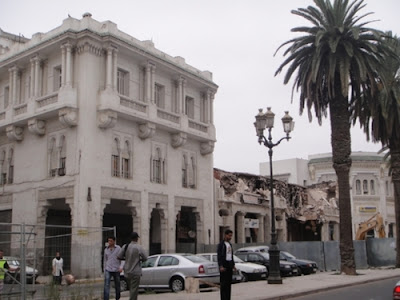South Central Morocco has been a melting pot of cultures and ideas for many centuries and is home to many thriving artisan communities. This melding of cultures has produced arts and crafts which are distinct from other African Nations. A fine example of this is craft work of the Azlag Dagger Cooperative from the Berber Village of Azlag in the province of Tinghir. The name Azlag means - “come together.”
The art of dagger making goes back over 700 years in this region of Morocco The cooperative (La Cooperative Artisanale Des Poignards Azlag) was found in the early 1980s with the help of the Moroccan Ministry of Tourism. This group is the only one of its kind in the whole country and their craft is an integral part of Moroccan culture. This traditional handicraft provides a livelihood for over one hundred families (almost 1000 individuals) in the village.
Their handcrafted daggers are a blending of designs from Roman, Jewish, Berber, and Islamic influences. One design is the Southern Cross which represents the constellation the Jews used to guide them through the desert. Another symbol is the Hand of Fatima, the daughter of the Prophet Mohammed, which is said to have had healing powers in her hand. It also represents protection from the evil eye, along with representing the five pillars of Islam. In the local culture, daggers are given as gifts at weddings and at other local celebrations; daggers are common items in household décor.
A dagger made for a wedding present was decorated on one side for the groom and on one side for the bride. The bride’s side usually is made of gold with silver (white) on top to symbolize protection from the hand of Fatima. The groom’s side is usually made only of silver with the Hand of Fatima symbolism throughout the design.
The cooperative is located in the town of El Kelaa M’gouna which is just 90 km East of Ouarzazate and 78 km West of Tinghir on the M-10 – the main road that connects Marrakech to Errachidia. Their site has a large showroom which houses many different styles and sizes of daggers and knives. The location also has over 55 individual work spaces and many of the artisans showcase and sell local jewelry, carpets, hand-woven baskets, rose products and other trinkets from local artisans. Visitors can see the intricate steps of the dagger making process. The showroom is open every day of the week from 10am to 6pm, except during religious holidays where the hours are scaled back.
For more information and to view their photo gallery please visit their Facebook page: Azlag Dagger Cooperative





















































